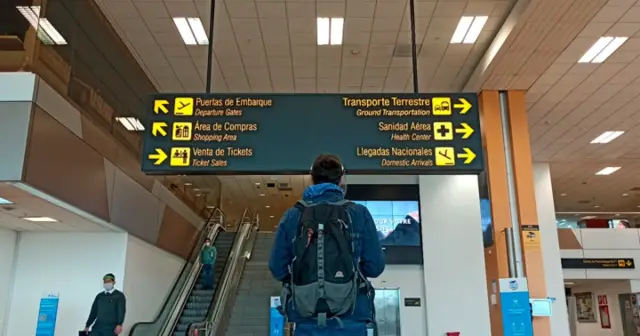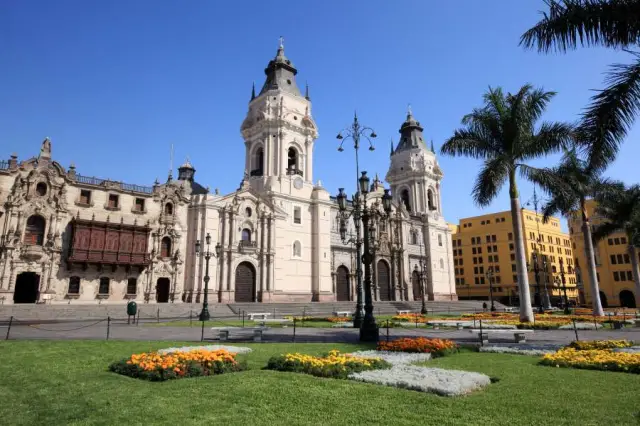If you're considering Peru as your next tourist destination in 2025 , one of the first things you should keep in mind is the entry requirements. Whether you're traveling for tourism, business, or a family visit, it's essential to comply with the required documentation to avoid inconveniences upon arrival. Peru is one of the most fascinating countries in South America , famous for its cultural richness, the majesty of Machu Picchu , its exquisite cuisine, and the warmth of its people. However, to fully enjoy this experience, it's important to be well-informed about current immigration requirements.
This article is designed to offer you a clear and detailed guide on the requirements for traveling to Peru from different countries. We include specific information for travelers from Colombia, Mexico, Spain, and other Latin American and European countries, as well as additional recommendations that will facilitate your entry into the country. If you want to avoid setbacks and enjoy your stay to the fullest, read on and take note of everything you need to enter Peru safely and legally.

General documentation for entering Peru
Before reviewing country-specific requirements, it's important to understand the general requirements that apply to most travelers wishing to enter Peru. These conditions apply regardless of the visitor's nationality and are intended to ensure orderly entry into the country.
Valid passport: All foreign travelers must carry a passport valid for at least six months from the date of entry. This is essential for immigration authorities to approve your entry. If you don't have this validity, you may be denied entry at the border.
Andean Migration Card (TAM): This immigration document is completed digitally upon entering and leaving the country. It's important to keep this receipt, as it will be requested upon leaving Peru. Currently, you can complete it electronically, which speeds up the process at the airport or border checkpoint.
Return or onward travel ticket: Immigration authorities may request proof that you will leave the country within the permitted timeframe. An air or land ticket with a departure date is valid proof.
Accommodation reservation or invitation letter: Proof of accommodation may also be required. If you're staying with friends or family, you can present an invitation letter signed by the person hosting you.
Proof of financial solvency: Although not always required, it's advisable to bring proof of financial means, such as credit cards, cash, or bank statements, to demonstrate that you can cover your expenses during your stay.
Country-specific requirements
Travelers from Colombia
Thanks to regional integration within the Andean Community (CAN) , Colombian citizens enjoy certain immigration benefits for entering Peru. Specifically, they can do so without a passport , using only their valid national identity card.
Required documents: You only need to present your valid Colombian ID. A passport is not required, although it is recommended if you plan to continue your trip to another country outside the CAN.
Length of stay: Colombian tourists can stay in Peru for up to 90 days per visit. In some cases, an extension can be requested, but this must be done within Peruvian territory with Immigration.
Minors: If you are traveling with minors, it is essential to have the permission of the other parent, in case they are not traveling with you. This document must be notarized and clearly specify the length of the trip and the responsible companion.
Travelers from Mexico
Mexican citizens can also enter Peru without a visa for tourist purposes , which greatly facilitates travel planning. However, they must meet certain basic requirements to ensure smooth entry.
Passport required: Unlike Colombians, Mexicans must carry a passport with at least six months' validity upon entry. This document is essential.
Length of stay: Peruvian immigration legislation allows Mexican tourists to stay for up to 183 days as non-resident visitors. This period is non-extendable.
Recommendations: It is recommended to have travel insurance, confirmed hotel reservations, and an itinerary of activities, especially for long trips or during peak season.
Travelers from Spain
Spain is one of the main countries sending tourists to Peru , so its immigration policies are well-established for its citizens. Spanish travelers do not need a visa if traveling for tourism purposes.
Valid passport: As in other non-Andean countries, Spaniards must present a passport valid for at least six months from the date of entry to Peru.
Permitted length of stay: Spanish tourists are allowed up to 183 days per calendar year. Work or paid activities are not permitted under this condition.
Recommended vaccinations: If you plan to visit jungle regions like Iquitos or Puerto Maldonado, the Ministry of Health recommends getting vaccinated against yellow fever at least 10 days before your trip.
Additional recommendations for all travelers
Travel medical insurance: Although not mandatory, having international medical insurance is highly recommended. It will cover you against unforeseen events such as illness, accidents, or even flight cancellations.
Vaccinations and Health: No vaccinations are required to enter Peru, but being up-to-date on basic vaccinations (tetanus, hepatitis A and B) and getting the yellow fever vaccine if you plan to visit Amazonian regions can be a key preventative measure.
Currency exchange: Carrying US dollars in small bills makes it easier to exchange them for Peruvian soles. Avoid exchanging money on the street and prefer official exchange offices or banks.
Customs Declaration: If you are carrying more than USD 10,000 in cash or high-value electronic items, you must declare them to customs. Failure to do so may result in penalties or confiscation.

FAQ – Frequently Asked Questions
Can I enter Peru with just my ID card?
Yes, if you are a citizen of Colombia, Bolivia, Ecuador, Argentina, Brazil, Chile, Paraguay, or Uruguay, you can enter by presenting your valid national identity document thanks to the agreements between Mercosur and the Andean Community.
How long can I stay in Peru as a tourist?
It depends on your nationality. Generally, a stay of 90 to 183 days is permitted, according to bilateral agreements. Always check before traveling.
Do I need a visa to travel to Peru?
No, if you are a citizen of most Latin American and Western European countries, you do not need a visa to enter for tourism. For long-term stays or other purposes, such as work or study, a visa is required.
Is vaccination mandatory?
It is not mandatory, but it is especially recommended if you will be visiting Amazonian regions.
What happens if I exceed the permitted time in Peru?
A fine will be applied for each additional day. You may also face restrictions on future entry.
